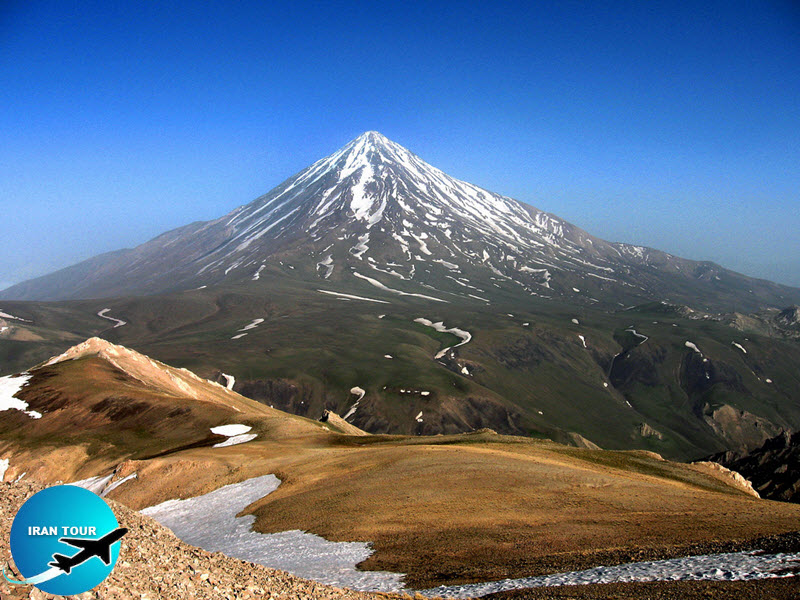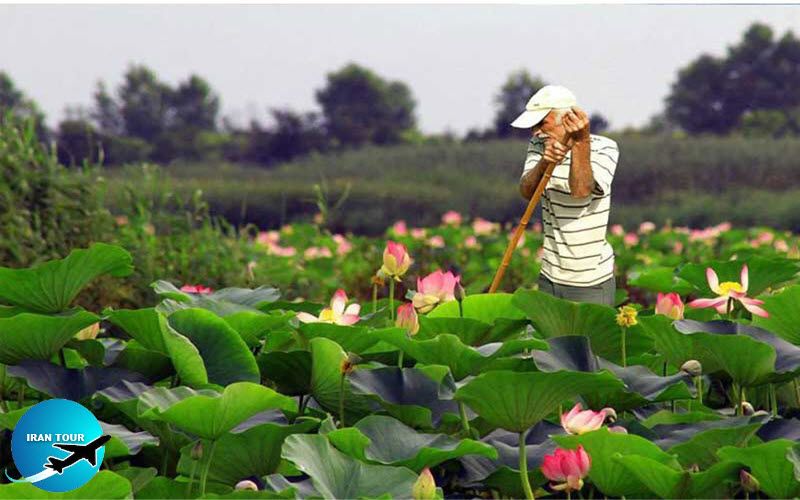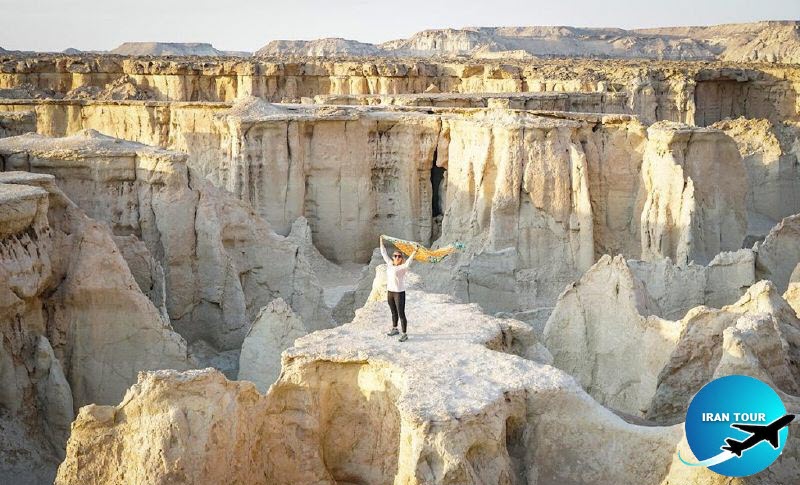Copyright 2020 - 2021 irantour.tours all right reserved
Designed by Behsazanhost
Iran Eco-Tourism Diversity
Iran Eco-Tourism Diversity
Eco and adventure tourism are concepts on the rise in the international tourism industry. Iran is a country with very diverse nature, mountains, lakes, caves, forests, exclusive animal and plant species, various water springs, and much more like the several Islands in the south and shores of the Caspian Sea in the north. All these make Iran a favorite country for those interested in experiencing something new, amazing, and unforgettable. Ecotourism is a new trend and phenomenon and because of the natural attractions and scenery and untouched areas of the country of Iran, It has become even more important than other tourism models.
The extensive land of Iran which includes the vast part of the Iranian plateau has provided various climatic conditions as well as different ecosystems and beautiful scenery which offer a unique opportunity for Eco tourists. Considering the rich natural properties of the country, we hereby draw your attention to the following wonderful contrasts existing in Iran :
The range of temperature in different parts of Iran differs a great deal, while it is freezing in mountainous areas of the north and west it can be very hot in southern areas.
Even more interesting is the difference in temperature, at the same time, in two areas close to each other, which provides such conditions that enable people to have winter and summer activities simultaneously. The tourists can do skiing in the Zagros or Alborz mountains and simultaneously with one hour flight would have the best summer activities in the Persian Gulf.
This is the real four-seasons country.
 |
-Damavand mountain
Sixty-six km to the east of Tehran, on the way Tehran-Firuz Kuh road. Damavand is a small town set in a closed-off and well-watered valley below the foothills of Mount Damavand. During the summer season, its populations increase highly due to the seasonal holidays and natural features of this area. The natural views, picturesque landscapes, fresh weather, roaring rivers, fruit gardens, and vast green plateaus are the most attractive features of this area. Also, archaeological excavations have recorded a long history for this territory that backed to the Neolithic times fifth millennium BC.
The origins of the town go back to the Sassanian period. In the historical districts of the town as well as in its neighboring villages, there remain some relics belonging to the beginning of the Islamic period, the 11th century AD, and the Seljuk period. The most important amongst these is are the Jom’eh Mosque and its minaret, of the same period, however, restored in later periods particularly during the Safavid rule and thus turned into a new building void of any historical significance. The mosque’s circular and simple brick minaret, which rests upon a rectangular brick base, is the only remaining relic of the structure. Traces of a Kuffic inscription and of other decorations, in the 11th-century style, remain to this day upon the mina-ret. At Damavand, there are also two funerary towers of the kind found so abundantly in the Caspian region.
 |
-Caspian Sea Beaches
Covering an area of approximately 438,000 square kilometers, it is the world’s largest land-locked body of water or lake Its southern shores belong to Iran. Heerkany is Khazar's ancient name and foreign maps and books also called it the Caspian. Its shores are shallow and sandy. The average depth in the northern section is 6 m. and a maximum of 1,000 m. in the south and southwest. One of the most important clefts in the southern parts of the Caspian Sea is the Anzali Wetland, located to the southwest of the Caspian; and the Mian Kaleh Peninsula which is separated from the Caspian Sea by the Qazian and Gorgan Bays. These are amongst the famous attractions of Gilan and the Mazandaran provinces. Its shores cover a distance of more than 6,380 m. of which is about 657 m. The calm blue sea forms the northern view, and the dense forests covering the foot of the northern Alborz Mountains forms the southern landscape. The surrounding shores are covered by paddy fields, plantations, and citrus orchards which create wonderful scenery. As far as tourism is concerned, it comprises active and semi-active areas. Parts of the eastern and central shores are the main areas of tourist attractions. Other parts such as Talesh and the Astara coast are semi-active areas. Being far from the cities and industrial establishments, the sandy shores and natural landscapes form a healthier environment in comparison to other coastal areas.
 |
-Anzali Lagoon
It extends to the southwestern coast of the Caspian Sea, west of the Sefid Rood delta, and south of the port of Anzali. Rivers, streams, and water from irrigation drain into this wetland, which covers an area of more than 100 square kilometers. Most of the rivers terminating in this wetland take their source in the mountains of Talesh, and after a steep incline end up in the plains. Apart from the economical and environmental aspects, it plays an important role in Gilan>s social, geographical, political, and cultural atmosphere. It is also of importance in connection with several scientific backgrounds such as zoology, biology, and environmental studies The wetland displays a spectacular view. Its aqua atmosphere is a suitable bed for the spawning of various types of fish, which play an important role in the economy of the region. This wetland is one of the best and most appropriate surroundings for various waterfowls. Hundreds of species of migrant birds choose to settle in this area for breeding. The Anzali wetland and its islands have a beautiful view that attracts nature lovers.
 |
- Kalout desert
Kerman province is a land of natural and attractive contradictions. Natural charms that fascinate all visitors. The climate diversity of Kerman province is very diverse due to special climatic conditions. In the north and northwest, the climate is dry, in the south and southeast is hot and humid, and in the southwest and the center is cold and mountainous. The mountains of this province, which follow the Zagros Mountains and the Central Mountain Range of Iran, with more than 14 peaks over 4000 meters, are the paradise of climbers. Also, the vast desert plains of this region such as Lut plain are some of the most attractive natural features of this region. These desert areas are one of the most important tourist areas of Kerman, which attracts thousands of tourists every year. The plains of Shahdad, Bam, and Jiroft are low-lying plains and reach a maximum elevation of 2,100 - 1,300 m. The extensive Loot Desert and its salt marshes occupy the major extent of the northeast of the province, salt marshes also form a large section of the northwest of the province. The deserts of Iran bear spectacular and interesting features, with a tolerable climate for at least six months of the year. A star-lit sky, which is a wonderful and breathless sight, a pregnant silence, panoramic views, mirages, the black, and white sands, and salty earth are some of the characteristics that one can witness only in desert regions. Furthermore, this mystic hold increases in the other facets that the desert upholds. These are the historical vestiges, such as the caravansaries or ancient and traditional inns, palaces, water reservoirs, water conduits, pilgrimage, and religious sites that have all amassed in these extensive, mysterious sands revealing the lifestyle of man in the past.
 |
-Abr Forest
The forest areas of the Northern provinces are the continuation of the Hyrcanian forest and the mountainous forests of the Alborz mountains. Semnan province is located in the vicinity of Mazandaran province that whose northern part is covered with Hyrcanian forests. The most important parks in Semnan are the Forest Parks of Sookan, Komesh, and Mahalat in Semnan, the Forest Parks of Garmsar, Damqan, and Shahrood. The major portion of Semnan province is in the desert area. The Kahak Desert, south of Garmsar, and the Haj Ali Qoli Desert, south of Damqan can be quoted as good examples worth visiting. Semnan province has such areas, like that of the Khosh Yelaq in the northeast of Shahrood, Parvar to the north of the township of Semnan, and Khar Tooran in the southeast of Shahrood. A special species of the wild ass inhabit the region of Khar Tooran. Other species of wildlife noted in Semnan province are, partridge, bustard, grouse, hare, leopard, musk deer, wild sheep, wild goat, ram, gazelle, sable, and Other different flora and fauna species are also scattered in the mountainous, plains and desert regions.
Among the natural features of Semnan, the Jangal-e Abr (literary meaning Cloud Forest) is one of the oldest and most beautiful areas that is the continuation of the forests of northern Iran. It is called a cloud forest because in most seasons is covered by an ocean of clouds and fog. Inside the dense forests, you cannot believe that you are in Semnan province, not far from Iran’s Central Desert and Khar Turan National Park the biosphere reserve. While you are visiting this area realize why Shahrud is called the small continent.
 |
-Bird Watching
There are about 10000 species of plants, and 516 wild birds (almost equal to the number of birds and plant species in the whole of Europe), which undoubtedly draw the attention of every specialist and animal lover. These species include some precious and rare species like Siberian Crane, Falcons, Imperial Eagle, Dalmatian Pelican, and some other spp. mammals have the same importance and attractions so among the 160 species of mammals, regard-less of Asiatic Lion, which used to live in the central parts of Iran, and the Caspian Tiger which was extinct not long ago(every now and then there are stories from locals about Caspian tiger still being around), are good indications of Iran’s great biodiversity that one can see the Persian Fallow deer which was thought to be extinct, Asian Cheetah which is really in danger of extinction, Persian Wild Ass, Asiatic Black Bear, and three species of genus Gazelle. Of course, all these animals need more protection to survive. It is also worth noting that the Persian Gulf of Iran is the inhabitants of the biggest mammal in the world (Blue Whale).
 |
-lout Desert
The plain of Loot is the largest hollow or pit in the plateau of Iran and a part of which is located between Sistan Va Baluchestan. This plain is one of the hottest and driest in the world with a minimum trace of water. To the west of this plain, is another area of wilderness called Namakzar, which is impenetrable in the rainy seasons. The eastern half of the plain is covered by moving sands, but a part of its southern sector is penetrable. Due to the hot sun and strong winds, heavy masses of sand move to the south and the southeast, forming a chain of sandy hillocks.
 |
-Iran Deserts
The deserts in Iran, most of which fall in the center of the Iranian plateau, are well known in the world for their enormous size, barrenness, and moving sands. Lut Desert is located southeast of Iran and Dasht-Kavir or Markazi Desert is located in the center. The length of the sand dunes in the Markazi Desert is approximately 150 kilometers. The relocation of moving sands is a big problem that threatens the towns and farms at the margin of Iranian deserts. The length of the desert from east to west is 800 km and its width from north to south varies between 150 to 400 km. Marvast, Damghan and Khartooran deserts fall in Markazi Desert. Salt-loving herbs grow in many Iranian deserts. There are many moats and marshes in Iranian deserts. The Markazi Desert is the lowest desert on the Iranian plateau. According to geologists in the past, this desert was Tethys Ocean which evaporated and dried up during the course of centuries because of rising temperature.
 |
Qeshm the Biggest Island in the Persian Gulf
The most beautiful island in the south of Iran in the Persian Gulf with its unique specifications. mangrove forests, eye-catching beaches, strange caves, and valleys, and sandy and stony hills, most of which are protected as part of the Unesco-recognised Qeshm Island Geopark – bliss for nature-lovers. Qeshm is a duty-free zone in the south of Iran with fast growth. If you're going to experience an authentic island experience, Qeshm won't disappoint you. The Qeshm will surprise you by, the local's decorated traditional dress, people who live in houses cooled by Badgirs (windcatchers) and work in boat-building yards turning out lenges, the large wooden cargo boats that have crisscrossed the Gulf for centuries. The island has an abundance of wildlife, including birds, reptiles, dolphins, and turtles
- Details
- Category: What to see in IRAN